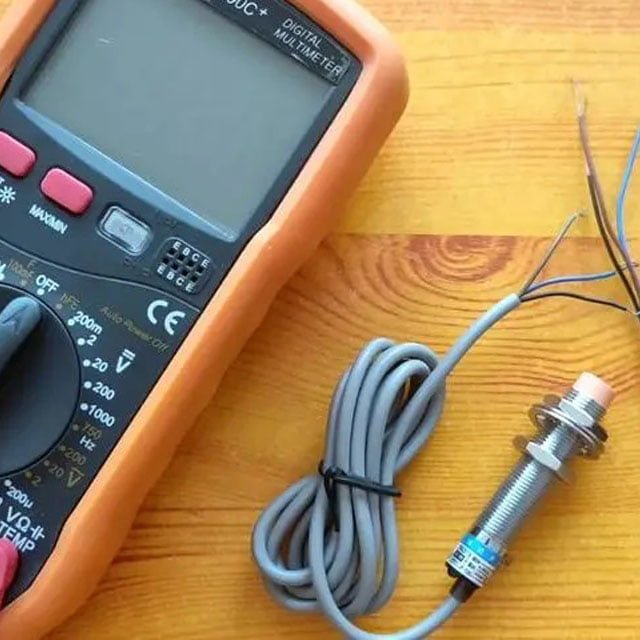Quando você opera um Controlador de temperatura PID Ao ler o manual do usuário, você frequentemente se deparará com o termo "auto-tuning". Mas o que é isso exatamente? E como ele funciona? Quer saber tudo sobre ele? Este artigo é a melhor opção para você aprender.
Neste artigo, você aprenderá:
- O que é o ajuste automático nos controladores de temperatura PID?
- Como isso funciona?
- Por que ele é tão popular?
- Suas funções e aplicações.
O que é sintonia automática?
Os controladores de temperatura PID obtêm um controle preciso da temperatura ajustando três parâmetros: proporcional, integral e diferencial.
Sua função de ajuste automático pode calcular e ajustar automaticamente os parâmetros PID ideais de acordo com as condições específicas do sistema de aquecimento ou resfriamento.
Não é necessário nenhum ajuste manual, o que proporciona aos usuários uma estratégia de controle que economiza tempo e trabalho.
Por exemplo, os parâmetros ideais do PID podem ser 1, 2 e 3. Encontrar esses parâmetros manualmente envolveria muitas tentativas demoradas de diferentes combinações de valores de PID. Além disso, se a temperatura ambiente mudar, os usuários terão de reajustar os parâmetros PID. Por outro lado, o recurso de ajuste automático pode determinar rápida e facilmente os melhores parâmetros em um tempo muito curto.
Como funciona o ajuste automático do controlador de temperatura PID?
O processo de ajuste automático do controlador de temperatura PID consiste nas quatro etapas a seguir:

Etapa 1: Defina uma temperatura de teste
Por exemplo, defina a temperatura em 50 graus Celsius. Quando a função de autoajuste é ativada, o controlador de temperatura energiza e desenergiza periodicamente o dispositivo de aquecimento em uma determinada amplitude e frequência. Durante esse processo, o indicador AT no controlador de temperatura continuará piscando até que o processo de autoajuste seja concluído.
Etapa 2: Analisar a curva temperatura-tempo
Ao analisar a curva temperatura-tempo, o controlador de temperatura pode calcular os parâmetros dinâmicos do objeto controlado, como a constante de tempo e o tempo morto.
Etapa 3: Calcular automaticamente os parâmetros do PID
Com base nos parâmetros dinâmicos calculados, o controlador de temperatura determina automaticamente os três parâmetros mais adequados - proporcional, integral e derivativo - e salva esses parâmetros na memória do controlador de temperatura.
Etapa 4: Defina novamente a temperatura desejada
Defina novamente a temperatura desejada para controle. Por exemplo, se você quiser manter a temperatura em 200℃, o controlador de temperatura PID usará os parâmetros PID ajustados automaticamente para controlar o elemento de aquecimento e manter a temperatura no ponto de ajuste.
Como ativar o ajuste automático dos controladores de temperatura PID?
Não é difícil habilitar a função de ajuste automático de nosso Controladores de temperatura TCN4 ou TC5 PID. Você pode ativar facilmente essa função seguindo o fluxo de trabalho a seguir:

A função de ajuste automático de outras marcas de controladores de temperatura é semelhante a essa, ou seja, encontre o código AT e ajuste o código OFF para ON, ou você pode ativar essa função de acordo com as instruções.
Se ainda tiver dificuldade para operar, você pode Entre em contato conosco para obter ajuda.
Significado do ajuste automático

As características térmicas dos diferentes sistemas de aquecimento e os requisitos do processo variam muito. Por exemplo, os parâmetros térmicos de um pequeno forno de aquecimento elétrico de laboratório e de um grande forno de refluxo industrial são completamente diferentes, como o método de condução de calor, a capacidade de calor etc. A função de ajuste automático permite que o controlador de temperatura se adapte automaticamente a vários sistemas de aquecimento sem a necessidade de ajuste manual e repetido dos parâmetros.
Isso pode melhorar significativamente a precisão do controle de temperatura. Em cenários em que os requisitos de precisão de temperatura são extremamente altos, como nos processos de litografia de semicondutores, pequenas diferenças de temperatura afetarão a qualidade do produto. Após o autoajuste, o controlador de temperatura pode resistir com eficácia aos distúrbios de temperatura (como mudanças na temperatura ambiente e na carga de aquecimento) e manter a temperatura de forma estável dentro da faixa de valores definidos.
Exemplo de aplicativo

Uma aplicação típica é o ajuste automático usado no processo de moldagem por injeção de plástico, o controle de temperatura da máquina de moldagem por injeção é muito importante. Diferentes materiais plásticos e processos de moldagem têm diferentes requisitos de temperatura.
A função de ajuste automático dos controladores de temperatura PID pode se ajustar rapidamente à temperatura exigida pelo novo material plástico e pelo processo de moldagem, poupando o usuário do trabalho de redefinir os parâmetros PID após a troca de materiais e o ajuste da temperatura, simplificando bastante o processo de operação.
Conclusão
Para usuários iniciantes, o autoajuste é uma maneira conveniente de ajustar os parâmetros do PID. Com a função de autoajuste, os usuários podem obter um controle preciso da temperatura sem operações complicadas.
Lorentzzi Os controladores de temperatura PID são equipados com funções avançadas de ajuste automático. Se você está procurando um fornecedor de controlador de temperatura PID fácil de usar na China, a Lorentzzi é a sua melhor opção. Entre em contato conosco ou envie sua consulta para shonxu@lorentzzi.com agora para começarmos a cooperar juntos!







